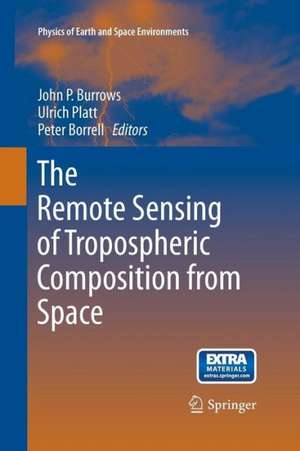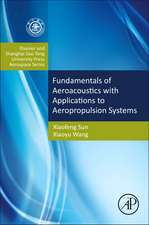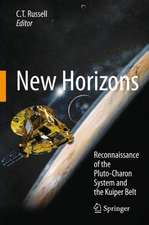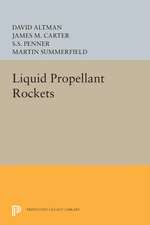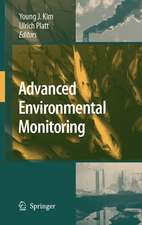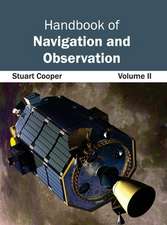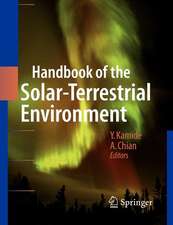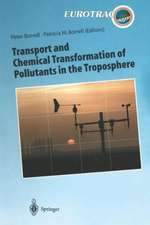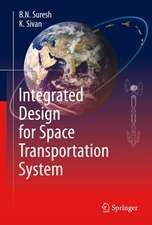The Remote Sensing of Tropospheric Composition from Space: Physics of Earth and Space Environments
Editat de John P. Burrows, Ulrich Platt, Peter Borrellen Limba Engleză Paperback – 23 oct 2014
| Toate formatele și edițiile | Preț | Express |
|---|---|---|
| Paperback (1) | 958.07 lei 43-57 zile | |
| Springer Berlin, Heidelberg – 23 oct 2014 | 958.07 lei 43-57 zile | |
| Hardback (1) | 967.88 lei 43-57 zile | |
| Springer Berlin, Heidelberg – 10 feb 2011 | 967.88 lei 43-57 zile |
Preț: 958.07 lei
Preț vechi: 1168.38 lei
-18% Nou
Puncte Express: 1437
Preț estimativ în valută:
183.33€ • 191.89$ • 152.59£
183.33€ • 191.89$ • 152.59£
Carte tipărită la comandă
Livrare economică 31 martie-14 aprilie
Preluare comenzi: 021 569.72.76
Specificații
ISBN-13: 9783642422683
ISBN-10: 3642422683
Pagini: 584
Ilustrații: XXXII, 551 p.
Dimensiuni: 155 x 235 x 31 mm
Greutate: 0.81 kg
Ediția:2011
Editura: Springer Berlin, Heidelberg
Colecția Springer
Seria Physics of Earth and Space Environments
Locul publicării:Berlin, Heidelberg, Germany
ISBN-10: 3642422683
Pagini: 584
Ilustrații: XXXII, 551 p.
Dimensiuni: 155 x 235 x 31 mm
Greutate: 0.81 kg
Ediția:2011
Editura: Springer Berlin, Heidelberg
Colecția Springer
Seria Physics of Earth and Space Environments
Locul publicării:Berlin, Heidelberg, Germany
Public țintă
ResearchCuprins
Tropospheric Remote Sensing From Space.- Solar Backscattered Radiation: UV, Visible and near IR-Trace Gases.- Thermal Infrared: Absorption and Emission - Trace Gases and Parameters.- Microwave: Absorption and Emission - Trace Gases and Metereological Parameters.- Remote Sensing of Terrestrial Clouds from Space using Backscattering and Thermal Emission Techniques.- Retrieval of Aerosol Properties.- Data Quality and Validation of Satellite Measurements of Tropospheric Composition.- Applications: Satellite Observations of Tropospheric Compostion.- Applications - Data and Models: Synergetic Use of Satellite Retrieved Trophospheric Trace Constituent Distributions and Numerical Modelling.- Conclusions and Perspectives.- Appendices.
Textul de pe ultima copertă
The impact of anthropogenic activities on our atmospheric environment is of growing public concern and satellite-based techniques now provide an essential component of observational strategies on regional and global scales. The purpose of this book is to summarise the state of the art in the field in general, while describing both key techniques and findings in particular. It opens with an historical perspective of the field together with the basic principles of remote sensing from space. Three chapters follow on the techniques and on the solutions to the problems associated with the various spectral regions in which observations are made. The particular challenges posed by aerosols and clouds are covered in the next two chapters. Of special importance is the accuracy and reliability of remote sensing data and these issues are covered in a chapter on validation. The final section of the book is concerned with the exploitation of data, with chapters on observational aspects, which includes both individual and synergistic studies, and on the comparison of global and regional observations with chemical transport and climate models and the added value that the interaction brings to both. The book concludes with scientific needs and likely future developments in the field, and the necessary actions to be taken if we are to have the global observation system that the Earth needs in its present, deteriorating state.The appendices provide a comprehensive list of satellite instruments, global representations of some ancillary data such as fire counts and light pollution, a list of abbreviations and acronyms, and a set of colourful timelines indicating the satellite coverage of tropospheric composition in the foreseeable future. Altogether, this book will be a timely reference and overview for anyone working at the interface of environmental, atmospheric and space sciences.
Caracteristici
state-of-the-art content, comprehensive in scope written and edited by international experts with many colour illustrations Includes supplementary material: sn.pub/extras
